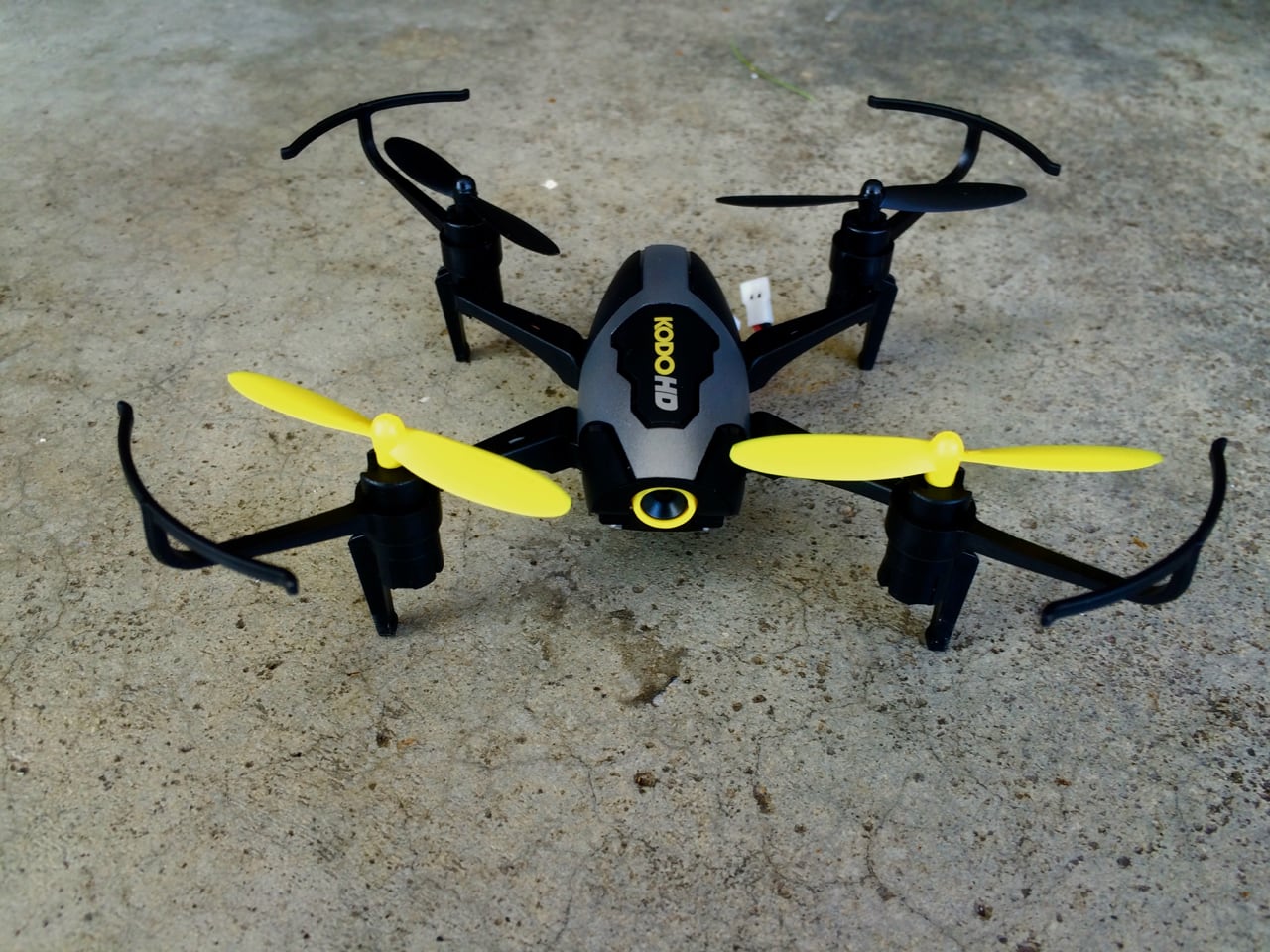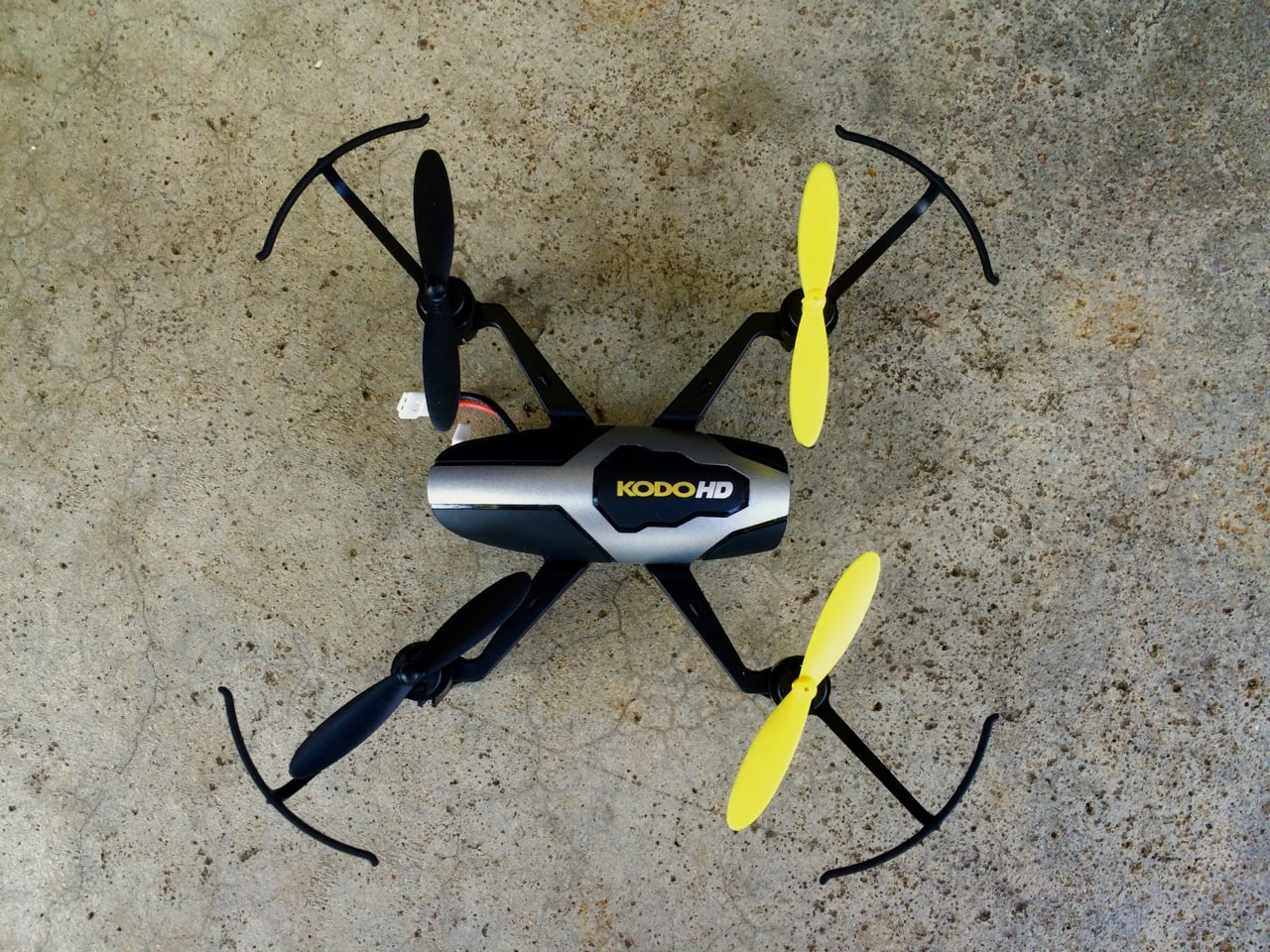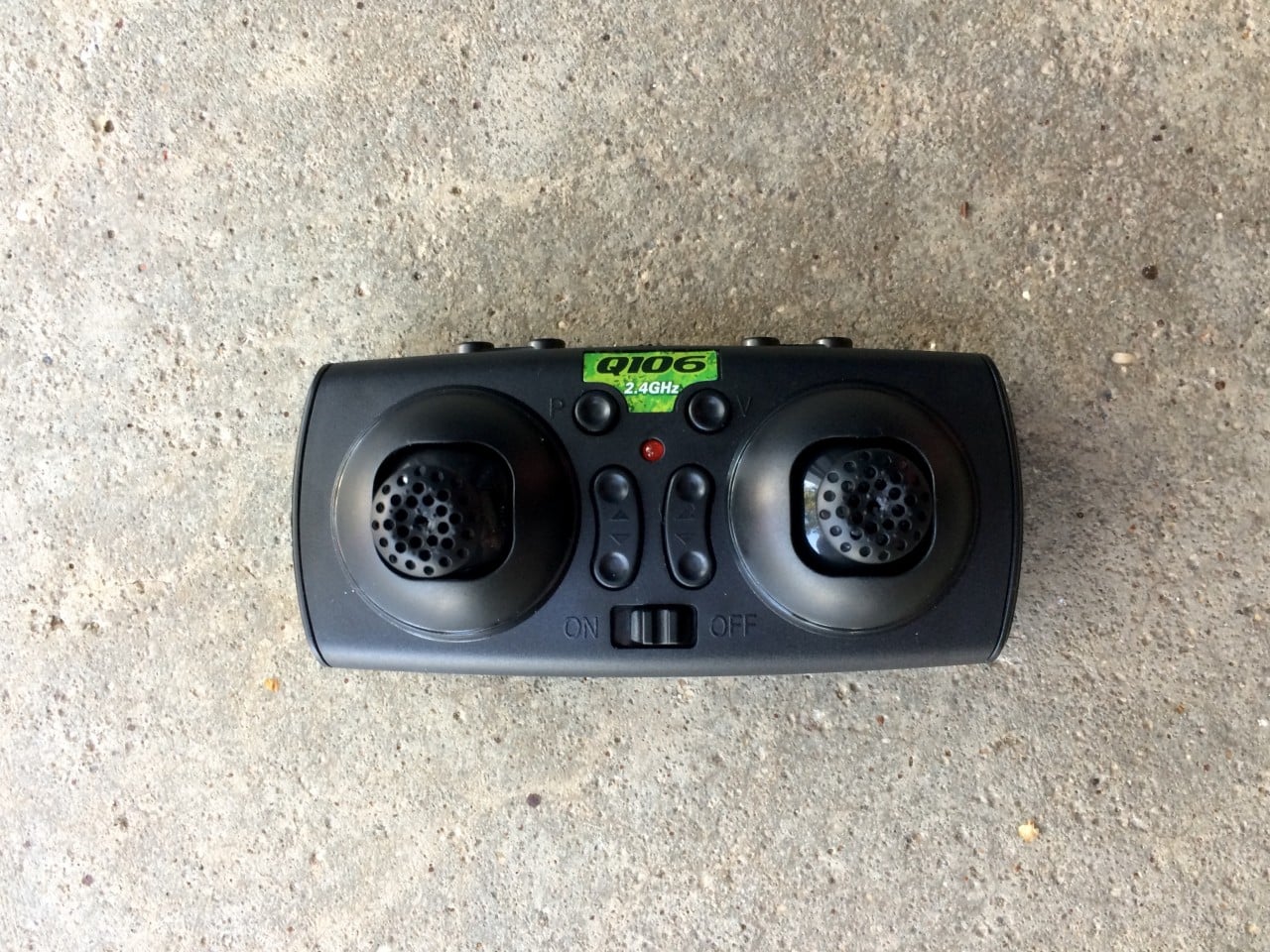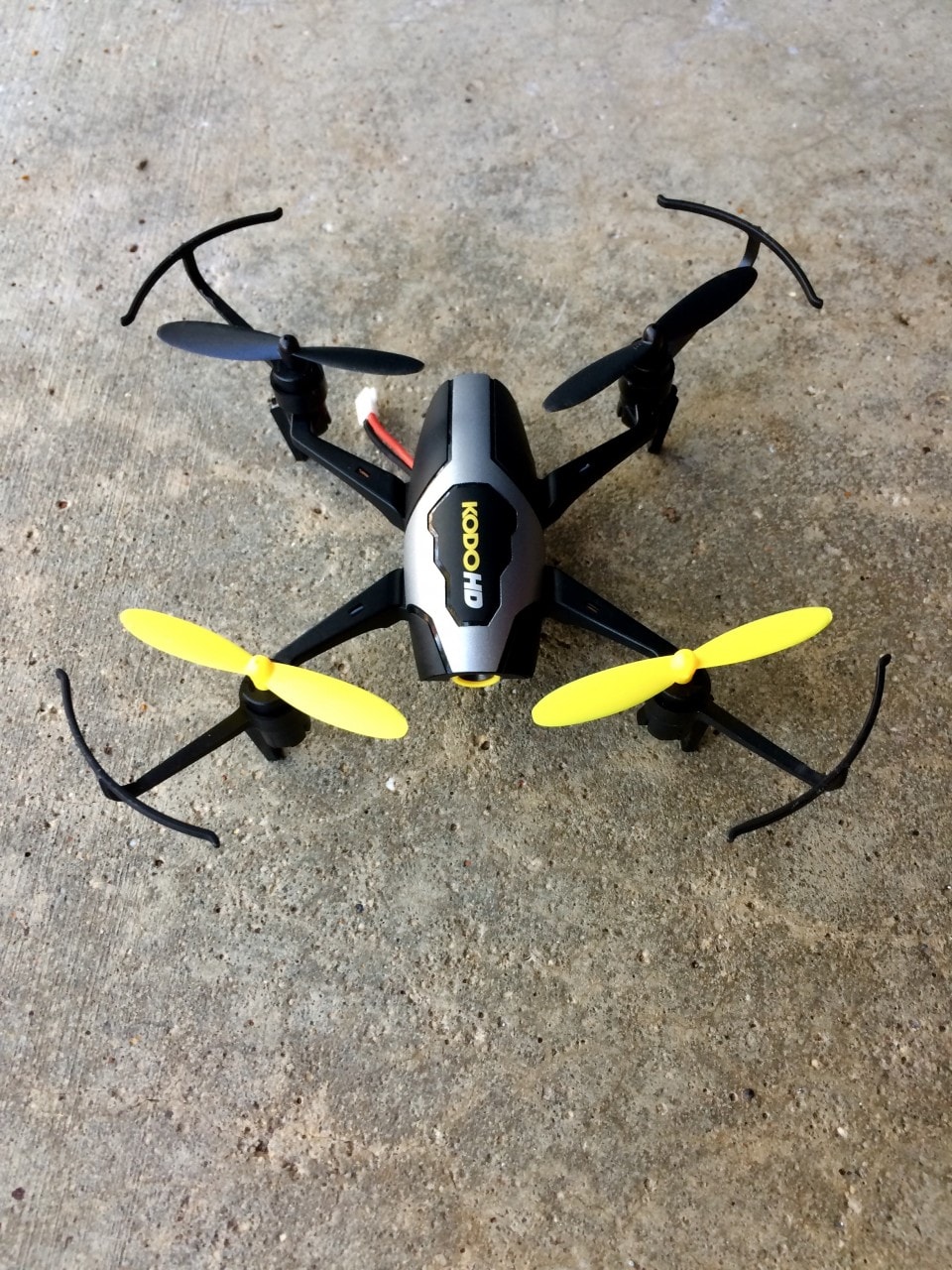Dromida KODO HD Quadcopter: The Review

Making the leap from R/C cars and trucks to the world of has been interesting, to say the least. While I still prefer surface vehicles to radio-controlled aircraft, I’ve experienced a new sense of freedom and relaxation while flying. My choice of aircraft for this new branch of the hobby was the Dromida KODO HD. This updated model caught my attention with a refined airframe, updated camera, and compact size, but that’s only the beginning of the story.

Dromida KODO HD Specifications
- Length (diagonal): 106 mm (4.17 in)
- Weight: 40 g (1.4 oz)
- Price: $59.99
What’s Included in the Box
- 1 Dromida KODO HD quadcopter
- 1 Dromida KODO HD controller
- 1 3.7V 350mAh LiPo battery
- 1 USB LiPo battery charging adapter
- 1 Micro SD card reader
- 4 Spare/replacement rotor blades
- 1 Instruction manual
The Controller
Transitioning from a surface radio-controlled vehicle to an aircraft requires a new way of thinking about vehicle control. It’s a true test of hand-eye coordination and muscle memory, ensuring your aircraft stays where it belongs.
The KODO HD controller is surprisingly small, but it feels nice when you hold onto it. The controls are all within comfortable reach and you don’t need to strain your fingers reaching for a button or knob while in flight.

Basic flight functionality is straightforward and easy to understand. Once you’re in the air, you can either play things safe and perform basic flight maneuvers or, if you’re feeling daring, you can utilize the auto flip features on the controller. When the right stick is pressed straight down, an audible notification will sound, letting you know that the stunt feature has been activated. At this point, you can move the right stick up, down, left, or right to perform in-air aerobatics.

Controller sensitivity can be adjusted by pressing the left stick straight down until you hear either one, two, or three audible “beeps”. Each notification sequence indicates the sensitivity setting for the controller (low, moderate, maximum).
The Aircraft
The design of the airframe is both rugged and sleek, having been modified over previous versions of the KODO quadcopter.

Dromida has built the KODO HD for durability, which is an aspect that I tested time and time again. Whether it was bouncing off tree branches, falling from the sky onto cement, or errantly flown into the side of my house, it withstood a decent amount of punishment.
Outside of crashing this quadcopter into whatever I could find (not by choice, mind you), I found it very easy to keep an eye on while it was in the air. The KODO HD is a large-enough aircraft that you can keep tabs on it without the need for excessive LED lights and illumination.
The Camera
While the main update of the KODO HD is the high definition camera, the quality that you get from it is what I’d call “entry level HD”. The 1080p camera is capable of capturing the general action from your flight experiences, however, if you’re looking for GoPro-level quality, you’re left wanting.
For the price ($59.99), having lower-quality video is better than no video at all. The camera mount can be manually adjusted to capture footage ranging from 0° to 80°, giving you the ability to change up your footage perspective during a day in the air.
Since this is a camera-equipped quadcopter, it is technically an FPV multirotor aircraft, but only through capturing footage. You won’t be able to fly the KODO HD via a streaming video feed if using the stock components.
Charging and Pre-flight
The KODO HD LiPo battery uses a supplied USB charger to keep itself juiced up and ready to go. The physical connection from the battery to the charger feels snug, however I encountered an issue with my charger, where I need to support the cable during the charging session in order for a constant connection to be maintained. This is probably a one-off flaw with the charger that came with my unit, but it’s worth keeping an eye out for.

The wires that lead to the four rotor motors run along the underside of the airframe are exposed. This has been a personal item of caution and I regularly check these wires for wear and damage before flight.
Taking to the Air
Getting the KODO HD to take off into the sky is easy. Staying there, depending on your level of skill, is the hard part. As I mentioned earlier, I have thoroughly tested the durability of the airframe and rotors during my flight time with this quadcopter. As each self-taught flying lesson takes place, I can feel myself getting a better grasp on the controls and the quirks of this particular aircraft.
While there is calibration that’s needed to ensure any aircraft will fly as straight and true as possible, I often find myself chasing my tail with the fine-tuning adjustments of the KODO HD. Whether that’s due to my inexperience with multirotor aircraft or the lightweight nature of this specific model, I felt that any slight breeze would cause this machine to drift outside of my planned flight path.

I will say that my later flights were some of my best and I was better-equipped to handle this quadcopter no matter what Mother Nature threw at me.
Is the Dromida KODO HD the Right Quadcopter for You?
There’s no denying the growing popularity of R/C multirotor aircraft. Whether you’re looking to learn how to fly or are looking for a low-cost, durable unit to take with you for “on a whim” flying, the KODO HD is a solid option. I’ve experienced a new level of freedom through flight, thanks in part to the easy setup and controls that this quadcopter features.
While I’d like to see higher-quality video capturing, the ability to have any video from a flight is better than no video at all. All-in-all, this is a solid option for any new to mid-level pilots that are looking to have fun in the air without a major cost investment ($59.99).
